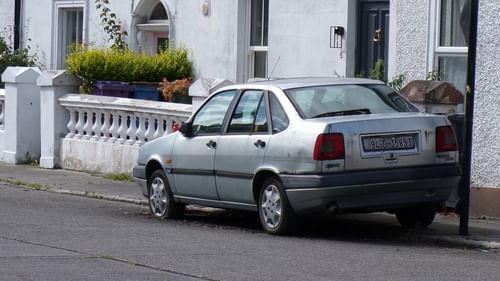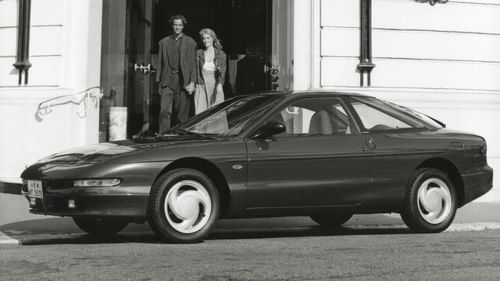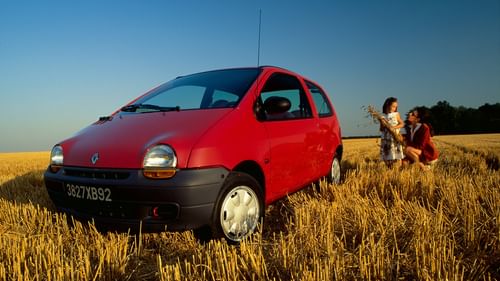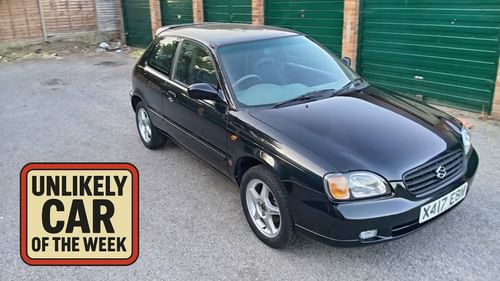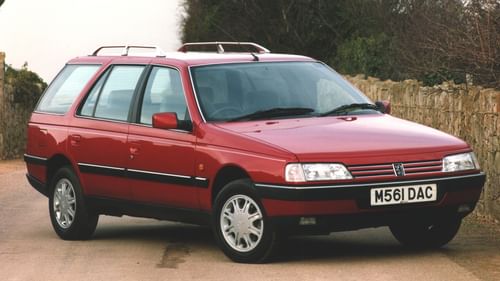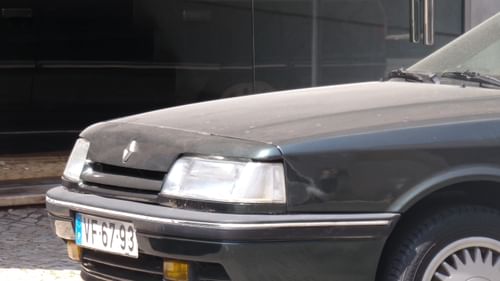David Milloy's position on the Lotus Elan M100
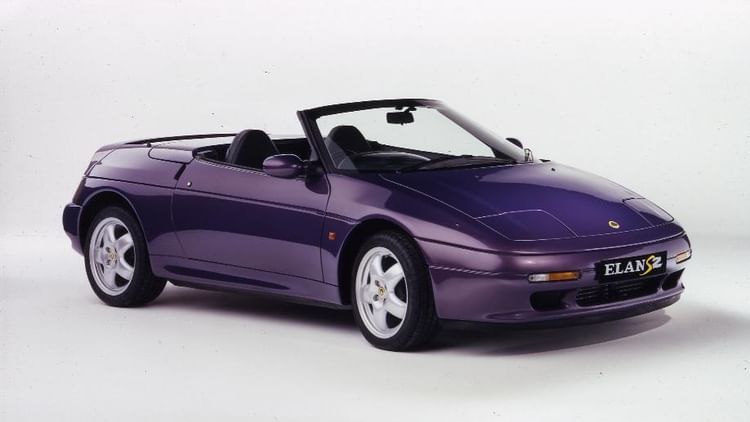
David Milloy takes a break from French Fancies to write some words on the Lotus Elan. No, not that one, the M100...
Winter. The most logical time of year for me to write a blog about a convertible - since I refuse to use mine in the rain or snow, I may as well write about it.
So, continuing with the theme of glorious failures from my Avantime blog, may I present to you the Lotus Elan M100 - a car touched by genius, but unjustly overlooked.
Launched at Motorfair at Earl's Court, London, in 1989, the Elan was probably the most controversial Lotus road car ever made. Why? Because it had - shock, horror - front wheel drive. Fans of traditional British sports cars were aghast, sales of string-back gloves and flat caps plummeted and questions were asked in Parliament.
 It didn't take long for the more macho elements of the motoring press to add their voices to the chorus of complaints about the M100's drivetrain. The Elan, they decreed, was no fun at all. The problem was a simple one: oversteer. Or, rather, the lack of it. Alpha males everywhere were appalled at Lotus's gall in producing a car that didn't allow them to indulge in a dab of oppo. Sales of medallions and chest wigs were badly hit.
It didn't take long for the more macho elements of the motoring press to add their voices to the chorus of complaints about the M100's drivetrain. The Elan, they decreed, was no fun at all. The problem was a simple one: oversteer. Or, rather, the lack of it. Alpha males everywhere were appalled at Lotus's gall in producing a car that didn't allow them to indulge in a dab of oppo. Sales of medallions and chest wigs were badly hit.
They were missing the point. As John Miles, former Lotus F1 driver and then Lotus development engineer explained, Lotus had always designed their cars to go where they were pointed. The Elan was simply the latest expression of that ethos. It was, he said, designed to replicate in its era the performance advantage which its namesake had enjoyed in the 60s and 70s.
The naysayers didn't have it all their own way, though. More enlightened observers proclaimed that Lotus had got it right. The Design Council gave Lotus a gong, and Autocar & Motor hailed the Elan as the world's first front-wheel drive supercar. The same magazine even suggested that readers should sell their families - grannies included - if that's what it would take for them to be able to buy an Elan.
 The Elan's biggest enemy was not prejudice, though, but the economy. Lotus had hoped to sell the Elan for about £16,000, but this couldn't be achieved. When deliveries started in April, 1990, the cheapest Elan - the non-turbo version - had an on-the-road price of over £18,000, and the turbocharged Elan SE came in at a smidgeon over £20,000. That may not have been such a problem if the Elan's launch hadn't coincided with a global recession. Belts were tightened, budgets trimmed, and £20,000 sports cars were reluctantly crossed off many shopping lists.
The Elan's biggest enemy was not prejudice, though, but the economy. Lotus had hoped to sell the Elan for about £16,000, but this couldn't be achieved. When deliveries started in April, 1990, the cheapest Elan - the non-turbo version - had an on-the-road price of over £18,000, and the turbocharged Elan SE came in at a smidgeon over £20,000. That may not have been such a problem if the Elan's launch hadn't coincided with a global recession. Belts were tightened, budgets trimmed, and £20,000 sports cars were reluctantly crossed off many shopping lists.
Against a backdrop of a recession, the first Gulf War and the falling dollar - Lotus was owned by General Motors at the time - sales never reached Lotus's target figure of 3,000 per year. And so, little more than two years after the first cars were delivered, Elan production came to an end. Just 3,855 had been built, all but about 130 of them being the SE model.
That wasn't the end for the Elan, though. In 1994, after Lotus had been bought by Bugatti, the Elan resumed production as a limited-run model. In this guise - the Elan S2 - the on-the-road price rose to nearly £25,000 in the UK. In spite of this, and another price hike in 1995, the S2 sold well and the full production run of 800 cars found buyers.
After S2 production ended, Lotus sold the tooling and the rights to build the Elan to Kia. Fitted with a Kia 1.8 litre non-turbo engine and with a number of changes, the Elan came back for a third production run in the late 1990s. Kia went on to produce around 1,000 of these cars, all in left-hand drive form.
 So much for the history, how does the Elan stack up today? Pretty well, in my view. Bereft of electronic fripperies, the Elan offers a beautifully analogue driving experience with performance that comfortably holds its own in comparison to more modern rivals. Handling remains a strength across the range - the Elan flows through corners with an ease that still impresses over 20 years on. The Elan driver won't find straight-line speed lacking, either. The turbocharged models, in particular, offer good performance even in standard trim. The only area in which the Elan shows its age is in the braking department. However, a variety of very effective brake upgrades are now available.
So much for the history, how does the Elan stack up today? Pretty well, in my view. Bereft of electronic fripperies, the Elan offers a beautifully analogue driving experience with performance that comfortably holds its own in comparison to more modern rivals. Handling remains a strength across the range - the Elan flows through corners with an ease that still impresses over 20 years on. The Elan driver won't find straight-line speed lacking, either. The turbocharged models, in particular, offer good performance even in standard trim. The only area in which the Elan shows its age is in the braking department. However, a variety of very effective brake upgrades are now available.
Given that Lotus cars have acquired a reputation for being more fragile than a soggy Hobnob, perhaps the most surprising thing about the Elan is that reliability is also good. It's reckoned that, if properly maintained, the Elan's Isuzu engine is good for 200,000 miles or more before needing a major rebuild. A handful of Elans have exceeded that mileage, and it's common to see examples with over 100,000 miles on the clock.
There's usually a good selection of Elans for sale in the UK at any given time. Prices seem to have stabilised, and an example in reasonable condition can be had for around £3,500. Prices rarely exceed £10,000, and only for the very best cars.
The last of the Lotus-built Elans may have left Hethel over 16 years ago, but development has continued in the enthusiast community. A chip-based engine upgrade for the turbocharged models offers up to a further 30-35 bhp for a little over £100, brake and suspension upgrades are available and it's even possible to buy roll hoops produced by a man who designed World Rally Cars for a living. Spares availability is generally good, and there's a very good internet-based club, www.lotuselancentral.com, that's free to join. Anyone thinking of buying an Elan should join this club first.
For all its qualities, the Elan has never fully received the praise that it deserved. The chest wig and flat cap brigades continue to dismiss the Elan simply because of the location of its driven wheels. They don't know what they're missing.
Also check out the piece of footage from the 'classic' Top Gear (above). Is it just me who yearns for Woollard, Goffey and Baker to return with a kind of 'Last of the Summer Top Gear' series of programmes? - MajorGav
